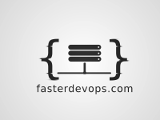Flask Docker Eks
Enter Kubernetes, Docker, Flask, and EKS.
That’s a lot of buzzwords, but combined they can powerfully orchestate and deploy an app(a Flask app will be used in this example). Kubernetes is designed to give you less headaches, not add complexity.
I recently switched jobs and went from using AWS about 20% to 100% of the time, which has driven me to doing more personal projects on AWS. Here’s how to deploy a Flask app to AWS EKS using Kubernetes and Docker.
eksctl.io
Outside of the usual using EKS with Terraform, I stumbled across eksctl, which appeared to be the quickest way to deploy a working kubernetes stack. Install eksctl to get started. This post assumes you already have working AWS credentials. Eksctl works off of yaml files to build clusters. I found this preferable over running eksctl create cluster -
apiVersion: eksctl.io/v1alpha5
kind: ClusterConfig
metadata:
name: testcluster
region: us-west-2
nodeGroups:
- name: nodegroup-1
instanceType: t2.small
desiredCapacity: 3
privateNetworking: true
iam:
withAddonPolicies:
autoScaler: true
albIngress: true
imageBuilder: true
** You can find all the files used in the example repo to copy/paste here.
You may want to change the clustername, region, nodegroup name, or instance type/capacity.
Save this as cluster.yaml and run the following -
eksctl create cluster --config-file=cluster.yaml
Eksctl will start running and may take sometime. For the above cluster.yaml, it took my runs about 10-15 minutes. You can always check the progress of the stack with the following -
eksctl utils describe-stacks --region=us-west-2 --cluster=testcluster
It should autocreate the .kube/config file but if it doesn’t you can always run -
aws eks --region us-west-2 update-kubeconfig --name testcluster
Assuming you have kubectl installed, you should be able to kubectl get nodes and see some output similar to the following with nodes in the Ready status -
NAME STATUS ROLES AGE VERSION
ip-192-168-111-24.us-west-2.compute.internal Ready <none> 138m v1.18.9-eks-d1db3c
ip-192-168-131-98.us-west-2.compute.internal Ready <none> 138m v1.18.9-eks-d1db3c
ip-192-168-98-153.us-west-2.compute.internal Ready <none> 138m v1.18.9-eks-d1db3c
Yes, that’s it. Kubernetes is easy, right? evil grin
Flask with Docker
I’m going to deploy this repo in this example thats already configured with a sqlite database. This repo is a very basic Flask API with minimal routes and an added healthcheck(more on healthcheck adventures later, maybe.) that utilizes Docker.
Next, I took my dockerized repo and uploaded it to AWS ECR. You can find a tutorial on doing this here - Docker Push ECR Image
With the docker image and repository ready to go with a working Flask app, let’s create a deployment and a service for it. Here I use port 5000, as I will be publically exposing it from the k8s cluster.
apiVersion: apps/v1
kind: Deployment
metadata:
name: appdeploy
labels:
app: flask
spec:
selector:
matchLabels:
app: flask
replicas: 3
strategy:
type: RollingUpdate
template:
metadata:
labels:
app: flask
spec:
containers:
- name: appdeploy
image: public.ecr.aws/imagenamegoeshere:latest
imagePullPolicy: Never
ports:
- containerPort: 5000
---
apiVersion: v1
kind: Service
metadata:
name: appdeploy
labels:
app: flask
spec:
ports:
- port: 5000
protocol: TCP
name: flask
selector:
app: flask
type: LoadBalancer
Since the Dockerfile and running the Flask app are not port specific, we will set it above.
Save this as deploy.yaml and run kubectl apply -f deploy.yaml. This will create the deployment and the service(Load balancer in order to access the API). You should be able to run kubectl get svc to see the External IP of the Load Balancer we just created. You should also be able to see the deployment -
➜ kubectl get deploy
NAME READY UP-TO-DATE AVAILABLE AGE
appdeploy 3/3 3 3 164m
Check the pods to make sure they are in the Running status with kubectl get po -n default.
Now, you should be able to hit the URL with our Flask api that the load balancer provided after running kubectl get svc.
curl -X GET urlgoeshere.us-west-2.elb.amazonaws.com:5000/
"Healthy!"
curl -X GET urlgoeshere.us-west-2.elb.amazonaws.com:5000/characters
{"Available Characters":[{"name":"jules"},{"name":"vincent"},{"name":"mia"}]}
curl -X GET urlgoeshere.us-west-2.elb.amazonaws.com:5000/quote/vincent
{"vincent says...":[{"quote":"Thats a pretty fucking good milkshake. I dont know if its worth five dollars but its pretty fucking good"}]}
curl -X GET urlgoeshere.us-west-2.elb.amazonaws.com:5000/quote/jules
{"jules says...":[{"quote":"You ever read the Bible, Brett?"}]}
curl -X GET urlgoeshere.us-west-2.elb.amazonaws.com:5000/quote/mia
{"mia says...":[{"quote":"When in conversation, do you listen, or do you just wait to talk?"}]}
Here, we see a working, high quality Pulp Fiction quote api in action.
…Nice
You now have a basic, working cluster ready to deploy and modify as you please. This is a very simple surface scratch of the capabilities of Flask and the platforms/software used. I may get into more advanced kubernetes and flask usage in later posts.
- Riley
Links -
